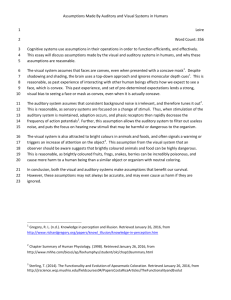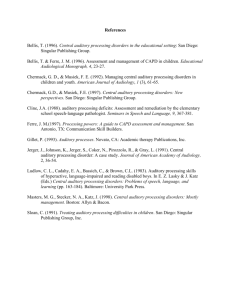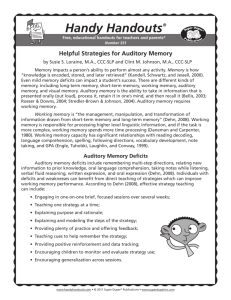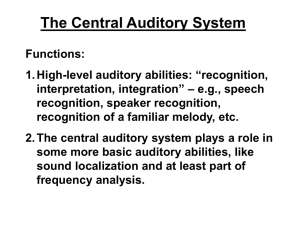Modeling the Auditory Pathway
advertisement
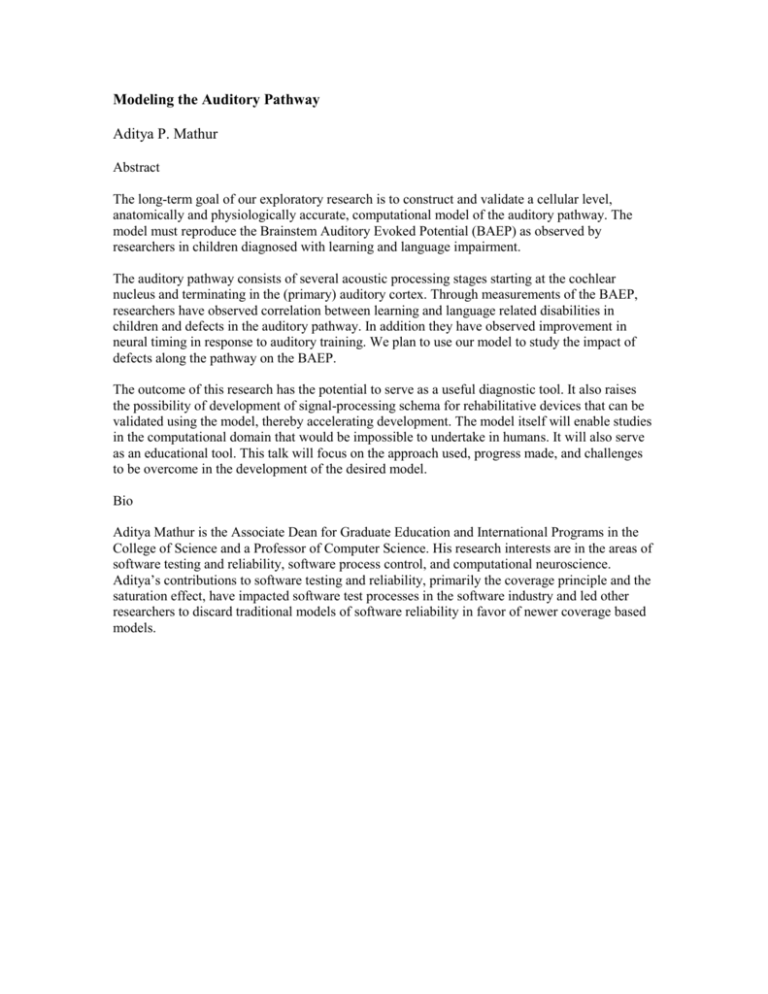
Modeling the Auditory Pathway Aditya P. Mathur Abstract The long-term goal of our exploratory research is to construct and validate a cellular level, anatomically and physiologically accurate, computational model of the auditory pathway. The model must reproduce the Brainstem Auditory Evoked Potential (BAEP) as observed by researchers in children diagnosed with learning and language impairment. The auditory pathway consists of several acoustic processing stages starting at the cochlear nucleus and terminating in the (primary) auditory cortex. Through measurements of the BAEP, researchers have observed correlation between learning and language related disabilities in children and defects in the auditory pathway. In addition they have observed improvement in neural timing in response to auditory training. We plan to use our model to study the impact of defects along the pathway on the BAEP. The outcome of this research has the potential to serve as a useful diagnostic tool. It also raises the possibility of development of signal-processing schema for rehabilitative devices that can be validated using the model, thereby accelerating development. The model itself will enable studies in the computational domain that would be impossible to undertake in humans. It will also serve as an educational tool. This talk will focus on the approach used, progress made, and challenges to be overcome in the development of the desired model. Bio Aditya Mathur is the Associate Dean for Graduate Education and International Programs in the College of Science and a Professor of Computer Science. His research interests are in the areas of software testing and reliability, software process control, and computational neuroscience. Aditya’s contributions to software testing and reliability, primarily the coverage principle and the saturation effect, have impacted software test processes in the software industry and led other researchers to discard traditional models of software reliability in favor of newer coverage based models.





